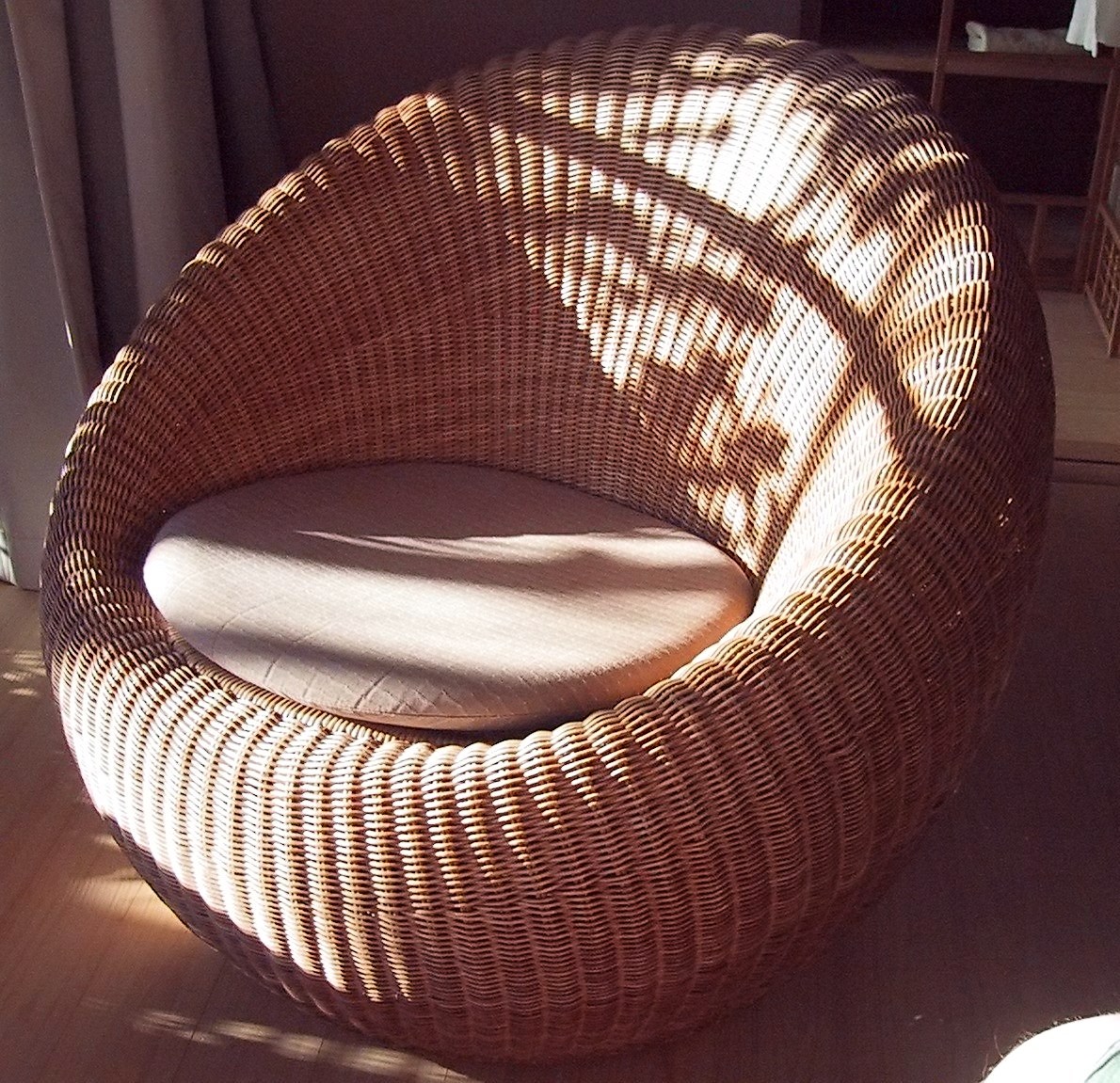A chair made from rattan. Photo by Chris 73/Wikimedia Commons.
This article was originally written in Dutch by Onno Havermans and published at Trouw.
Rattan, popular in the 1960s and 1970s, is making a comeback. As a natural product from the rainforest, it it’ usually assumed to be sustainable. But is that right? And what are the things you should pay attention to?
That old armchair in which grandma was dozing, the bench in the garden, the laundry basket, the lampshade, the flower pots: wicker furniture and baskets take many readers who were young in the sixties and seventies back to their childhood. Rattan (and wicker) was extremely popular in the second half of the last century. Cafés built their terraces with fashionable chairs, and in many living rooms the heavy oak took on a light hippie-like rattan counterpart.
Though the material fell out of fashion in the 1990s, rattan is now making a comeback. As a natural product, it is usually assumed to be sustainable though that is not always true. Rattan is a liana-like palm that grows in tropical rainforests. The tough stems are harvested and often peeled as wicker cane. During large-scale industrial harvest, parts of the rainforest disappear.
New quality mark
“It’s too sad for words how much rainforest is being cut down, really depressing,” said Gerard van der Sar, director of an import company under his own name, with a factory in Indonesia that makes baskets from rattan that has been sustainably harvested in the rainforests of Kalimantan. At the beginning of March, Van der Sar was the first company in the world to receive the new quality mark for sustainable rattan: PGS ROLES.
“The rainforest has to be spared, so we ask our harvesters to limit their harvest so that the plants can regrow. We pay them for that,” said van der Sar.
The label was developed by the Non-Timber Forest Products – Exchange Program (NTFP-EP) and the Ministry of Environment and Forestry in Indonesia, with support from the Dutch branch of the International Union for Nature Conservation (IUCN). It is a so-called participatory guarantee system, which offers the participating farmers both nature conservation and an income and social well-being.
“Both the rainforest and the local communities benefit, not the market dominated by large producers,” explains Evelien van den Broek of IUCN.
“We are very enthusiastic about this quality mark, because it comes from the bottom up. It is hoped that a furniture maker will now also want to join in,” said van den Broek.
Van der Sar also hopes that other companies will follow his example: “I want to help them with that.”
By-product of timber plantations
Recently, there is therefore a quality mark for sustainable rattan. Yet consumers will not notice much of this yet, van der Sar expects.
“Sustainability is more than just hanging a label on a basket. We supply to the specialist trade: florists, garden centres and wholesalers. They must sell sustainable products, the customer must be willing to buy them. Our quality mark is not yet visible to the consumer,” said van der Sar
Wilco de Glee of rattan specialty store C&J Rotan in Hilversum is not yet aware of the quality mark. He hardly ever gets questions about the durability of his furniture. “But if there’s something we need to do, we’ll do it,” he says.
According to De Glee, the material from which the furniture is made in his shop is a by-product of wood plantations, so there is no extra felling necessary. The wood has the FSC (Forest Stewardship Council) quality mark.
Van der Sar has tried to include his rattan production line under FSC as well. But timber harvesting involves many more hectares than rattan, which makes the costs too high. Moreover, the local people will benefit more from the new ROLES label.
“They now have year-round work and weekly income,” says van der Sar.
“Roles is not an expensive international benchmark”, adds van den Broek in IUCN. “The system is cheaper for the farmers, but the products become more expensive because they earn more from it and harvest sustainably.”
Buy second hand
Certified rattan is now produced in three areas: Central Kalimantan, East Kalimantan and Central Sulawesi. However, for those who want to know whether the rattan chair, mat or basket that they want to buy is made sustainably, it is of little use. Whether the rattan from which they are made has been sustainably harvested or not is difficult to determine. Van den Broek has advice for people who already want to be sure of a sustainable product: buy second-hand.
After the interview, Van der Sar adds: “You made me think. Now, after four years of hard work, we have sustainable, certified products, and then we forget about the consumer! From September 1, there will be a ROLES logo with information on every basket we bring to the market.”




